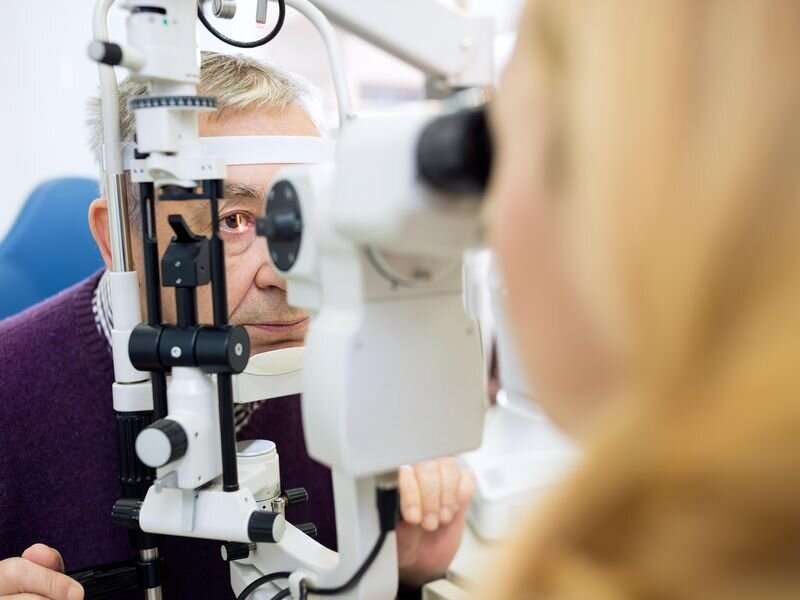This article has been reviewed according to Science X's editorial process and policies. Editors have highlighted the following attributes while ensuring the content's credibility:
fact-checked
reputable news agency
proofread
Glaucoma: Spotting it early is crucial

Treatment can control the symptoms of the most common type of glaucoma and save someone's vision.
The catch is that a person can't feel the changes in eye pressure that can damage vision, so they often won't know they even have it before it's too late.
That is, unless they've been seeing an eye doctor regularly.
One vision expert encourages people to not wait for that pressure to damage the optic nerve, but rather to preserve vision with regular health care.
"Some people say they don't need glasses, so they don't need to see an eye doctor," said Dr. Tara O'Rourke, an optometrist at Penn State Health Eye Center. "It's important for everyone to have yearly eye exams to monitor the health of the eye, especially for patients over the age of 50."
About 3 million Americans have glaucoma, according to the U.S. Centers for Disease Control and Prevention. The condition is the second leading cause of blindness in the world.
Half of those who have the most common type, open-angle glaucoma, don't know they have it.
In open angle glaucoma, the tiny canals that naturally drain away eye fluid become clogged.
"The exact cause or mechanism of open angle glaucoma is unknown at this time. We can manage the eye pressure, but do not have a cure for the disease," O'Rourke said in a center news release. However, treatment can control glaucoma.
Both heredity and age can contribute to the condition. O'Rourke recommends that people over 50 get tested for glaucoma at least annually, even with perfect vision. A person who has a family member with glaucoma should test earlier.
Some can experience pain, cloudy vision and a sensitivity to light, but many have no symptoms early in the disease. Rather, they have a slow progressive peripheral vision loss, which is irreversible.
Eventually, people with this condition will have total vision loss without treatment. Yet, glaucoma is treatable, especially in the early stages.
To diagnose glaucoma, doctors test to determine eye pressure. Normal pressure is anywhere from 10 millimeters of mercury (mm Hg) to 21 mm Hg. Any measure over 21 is a reason for more testing.
A puff test, in which a machine blows a puff of air into a patient's eye, is common.
O'Rourke said she typically uses a device called a Goldmann applanation tonometer. With this test, an eye drop numbs the eye, then the device gently taps or rests on the front surface of the eye to get a better reading.
A common treatment is using eyedrops, which will need to continue indefinitely. A variety of drops will have different effects. Some drops decrease fluid production. Others help to improve fluid outflow.
Oral medications can also lower the pressure in the eye, and laser therapy can enhance the outflow of fluid through the drainage system of the eye. Medication will still typically be needed to keep the pressure in the eye down.
Surgical options include installing tiny tubes called stents. These tubes help to clear fluid in the eye. This may happen at the same time as cataract surgery for some patients.
More information: The U.S. National Eye Institute has more on glaucoma.
Copyright © 2023 HealthDay. All rights reserved.





















